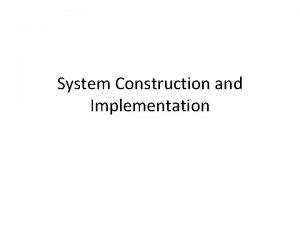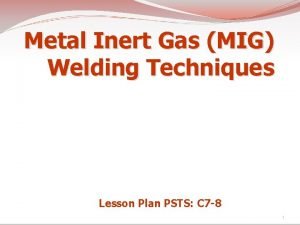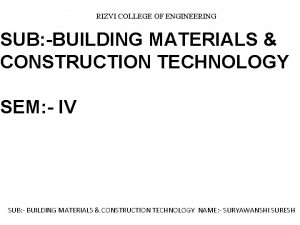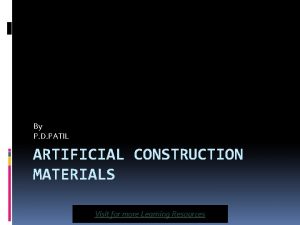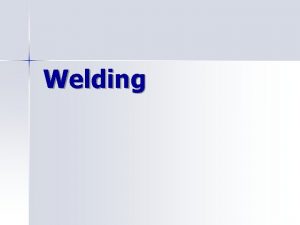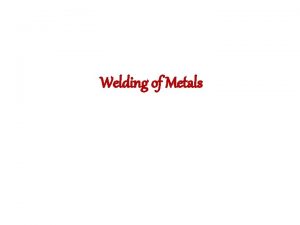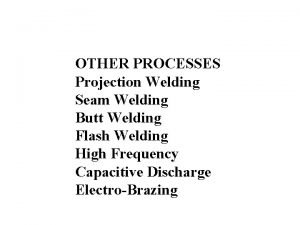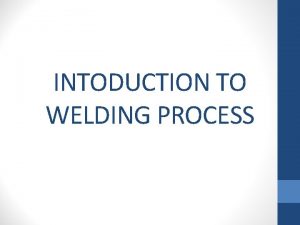Technology Implementation Design Construction Materials and Welding Technology








- Slides: 8

Technology Implementation Design, Construction, Materials, and Welding Technology Track at R & D Forum Yong-Yi Wang Engineering Mechanics Corporation of Columbus 3518 Riverside Drive, Suite 202 Columbus, Ohio 43221 614 -459 -3200 ext. 230 ywang@emc-sq. com

What is Implementation? n Put technology to field practice u u u Codes and standards Hardware Software Publications Internal use by operators 2

Threats and Opportunities n Threats u Outdated codes and standards F u u n For instance, some codes are so out-of-date that companies may not use them or even participate committee activities Weak link among universities, national labs, research institutes, and commercial entities Gap of talents and knowledge Opportunities u u Risk-based design and maintenance Computational/software tools 3

Code Activities (Limited Scope) n ASME u Reliability-based design and assessment (RBDA) F F F n ISO u n u u n 1104 CSA u n Reliability based limit states design (ISO 16707) API u n Based on PRCI-funded work at C-FER Establish target reliability for different failure modes Target reliabilities calibrated to current industry practice Reliability based limit states design Strain based design Revision of CSA Z 662 Appendix K OPS/MMS sponsored work Not covered here: NACE, AWS, ASTM 4

DOT/PRCI Project on Weld Code Revision n An example of code implementation (commercialization) u u u n n Targeted specific codes from the start Clear deliverables and schedule Involvement of industry through public meetings and code committee activities Develop deterministic ECA procedures that would form the basis of code revisions for API 1104 Appendix A, and other ECA codes in North America as appropriate Incentives u u Appendix A has not been maintained to the current understanding since its adoption. It was good for the circumstances and technical understanding at the time of its adoption. The safety margin of Appendix A is questionable for modern TMCP materials with high Y/T ratio. Need to extend to strain-based design 5

DOT/PRCI Project on Weld Code Revision n Involvement of the industry u u n Collaboration with code committees u u u n PRCI Trans. Canada Lincoln Electric Duke energy API 1104 CSA ASME Status u u Two public meetings Results of the first focus area was turned over to API 1104 committee is in the process of drafting the code language. Work in the second focus area ongoing F F Modeling, micro-mechanics, damage mechanics Correlating small- and large-scale experimental tests 6

Challenges in Codes and Standards n n Outdated Codes and standards from overseas are becoming de facto standards, particularly in u u n n Offshore Countries other than U. S. Code committees may not aware of the status. Lack of company support Gap in talent and knowledge Poor code maintenance, lack of continued update 7

Actions n n n Review gaps in codes and standards Communicate the gaps to the relevant standard committees Improve and maintain communication with codes and standards committees Encourage collaborative research among industry, applied research organizations, universities and national labs Require commercialization plans in proposals Follow up with commercialization plans u u n n Monitoring As a criterion for future funding Government funding agencies need to take a leading role to jump start the standards making and revision process as the industry participation is likely to remain low in the foreseeable future. Support standards development specifically relevant to the maintenance of existing pipelines 8

